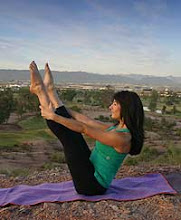I was very baffled and confused by this very question when searching for the best company to certify me to teach Pilates. After taking Pilates lessons from 5 different Pilates teachers around the valley, the choice became clear. I followed my instincts based on how I felt after my workout and from the confidence I felt my Pilates teacher exuded. I wanted to stay after my workout and discuss my body and its weaknesses and strengths, something I never felt the urge to do before. I felt excited and eager to continue working out this way because I instantly stood taller and felt my body moving more freely. Knowing what I know now, I am so glad that I chose Power Pilates, a classical method.
Why did I feel this way and why was it so much more profound then the other workouts I experienced? I have to give credit to my Pilates teacher who had much experience and really pushed me to do more than I thought I could. Additionally, I now know that following the system of classical Pilates really makes a difference in how you feel after the workout. There is a reason Pilates was created in a certain order with specific progressions and not a lot of deviation. One exercise prepares your body for the next and gets you "connected to your powerhouse." You lie down on your back in order to feel your spine in a neutral position while working your core. You progress to seating, kneeling and ultimately standing with a stronger sense of body alignment and muscular integration. The exercises prepare you to stand correctly and to maintain that posture when moving and going throughout your day.
So why contemporary Pilates? Some of the exercises Joseph Pilates created have been broken down and modified in order to be more accessible to the general public and/or to be more biomechanically sound. This is seemingly reasonable and logically, however I feel Power Pilates has accomplished these tasks without deviating from the true intention of Pilates or making it at all unrecognizable. For example, a lot of the classical Pilates work is done in "Pilates stance" or in a slight externally rotated position of the legs. Power Pilates has changed this and made many of these exercises to be taught in parallel, or with the feet tracking in line with the hips. This was done because it is believed to be more biomechanically sound and simply easier for the average client to be able to properly perform.
My take on contemporary Pilates methods such as Stott, Balanced Body, and Polestar is that they have ultimately changed the information so drastically that it makes you wonder why. I'm not convinced I know the answer. I find it curious that even the names of exercises are different. The purpose of the exercies sometimes seems unclear not just to myself but to the teachers instructing them. What I have witnessed is there does not seem to be a system that this approach follows, but rather a random selection of exercises. Pilates Teachers always have a choice as to what exercises they will teach, but as a Power Pilates teacher you follow an order and choose to interchange one exercise with another according to the client that is in front of you. The exercises are given in a progression from beginner, intermediate, and advanced systems including Mat, reformer and an individual needs grouping of exercises. It’s just so much easier and effective this way.
Despite my confidence in my training, I have experienced and learned some new adaptations to classical exercise and sometimes like them better than the original. I have utmost respect for fellow Pilates teachers trained under other methods and learn things from them as well. There is definitely more than one way to teach and I feel that we must keep an open mind to continue growing with the method. I just think we should look hard and decide reluctantly when changing Pilates. Good things stand the test of time and Joesph Pilate's work is clearly brilliant.
Subscribe to:
Post Comments (Atom)

No comments:
Post a Comment